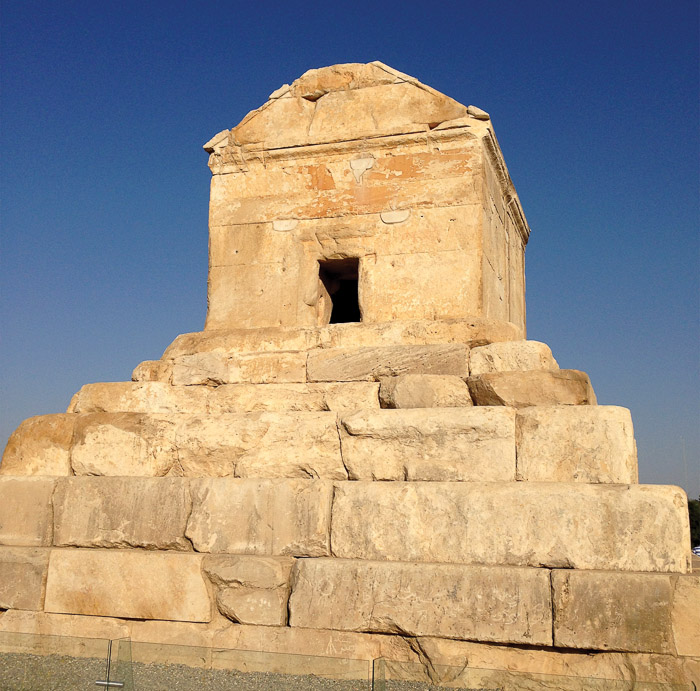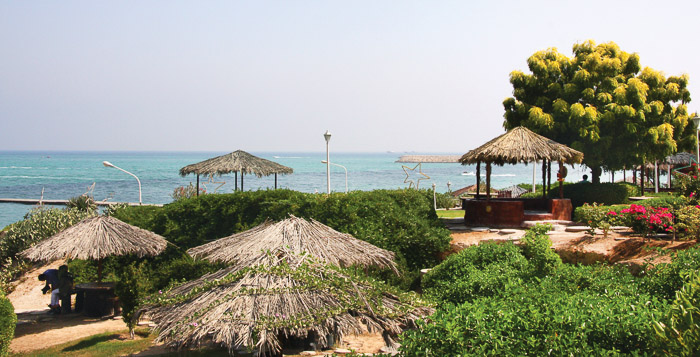Iran, also known as Persia, is a country in Western Asia. Iran is home to one of the world's oldest civilizations. The first dynasty in Iran formed during the Elamite Kingdom in 2,800 B.C. Cyrus the Great founded the Achaemenid Empire (550-330 B.C.), which ruled over significant portions of the ancient world, making it the largest empire the world has ever seen. Iran is rich in culture and history, and the landscape is fascinating.

Tomb of Cyrus the Great, Pasargad, Shiraz
Iranians were among the first to use mathematics, geometry, and astronomy in architecture and also have extraordinary skills in making massive domes which can be seen frequently in the structure of bazaars and mosques. The main building types of classical Iranian architecture are mosques and palaces. Besides being home to a large number of art houses and galleries, Iran holds one of the largest and most valuable jewel collections in the world.
The Iranian people are an Indo-European ethnic-linguistic group. Currently more than 90 percent of the total population is Muslim. Iran has a population of around 77 million in an area of 1,648,195 sq km (636,372 sq mi) and is considered the 18th largest country in the world. Iran is divided into thirty-one provinces. Many ethnicities and races live in Iran. It has one of the highest urban growth rates in the world. Tehran is the capital of Iran with Mashhad, Isfahan, and Shiraz being some of its biggest cities.

Kish Island, Iran
In general, Iranians are warm, friendly and generous individuals with a strong interest in foreigners and other cultures. The culture, like most others in the Middle East and Central Asia, has a strong tradition of hospitality. Guests are often treated extremely well. Although the pace of the major cities is quite fast, you will always find people willing to help you in any way they can. Most people, especially the younger speak English.
Studying in Iran and specifically in Tehran will not only give you the opportunity to study medical sciences but will also introduce you to the culture and traditions of the Iranian people.
So join us in Tehran to explore all of the mysteries of this adventurous city!
Iran on UNESCO's World Heritage List
16 sites listed on UNESCO's World Heritage list are located inside Iran:
|
1- Tchogha Zanbil, Khouzestan
 |
2- Meidan Imam (Imam Square), Isfahan
 |
|
3- Persepolis, Fars
 |
4- Takht-e-Soleyman, West Azarbaijan
 |
|
5- Bam and its cultural landscape, Kerman
 |
6- Pasargad, Fars
 |
|
7- Soltaniyeh, Zanjan
 |
8- Bisotun, Kermanshah
 |
|
9- The Armenian Monastic Ensembles
 |
10- Shushtar, Historical Hydraulic System, Khouzestan
 |
|
11- Tabriz Historic Bazar Complex, East Azarbaijan
 |
12- Sheikh Safi al-Oin Khanegah and Shrine Ensemble, Ardabil
 |
|
13- The Persian gardens
 |
14- Gonbad-e Qabus, Golestan
 |
|
15- Masjed-e Jame, Isfahan
 |
16- Golestan Palace, Tehran
 |
|
|
For more information please visit
Institute of culture and tourism: http://www.ichto.ir/Default.aspx?tabid=1028
Lonely planet: www.lonelyplanet.com/iran
Trip advisor: http://www.tripadvisor.com/Tourism-g293998-Iran-Vacations.html
Visa: http://www.iranianvisa.com/
TUMS: http://tums.ac.ir/?lang=en